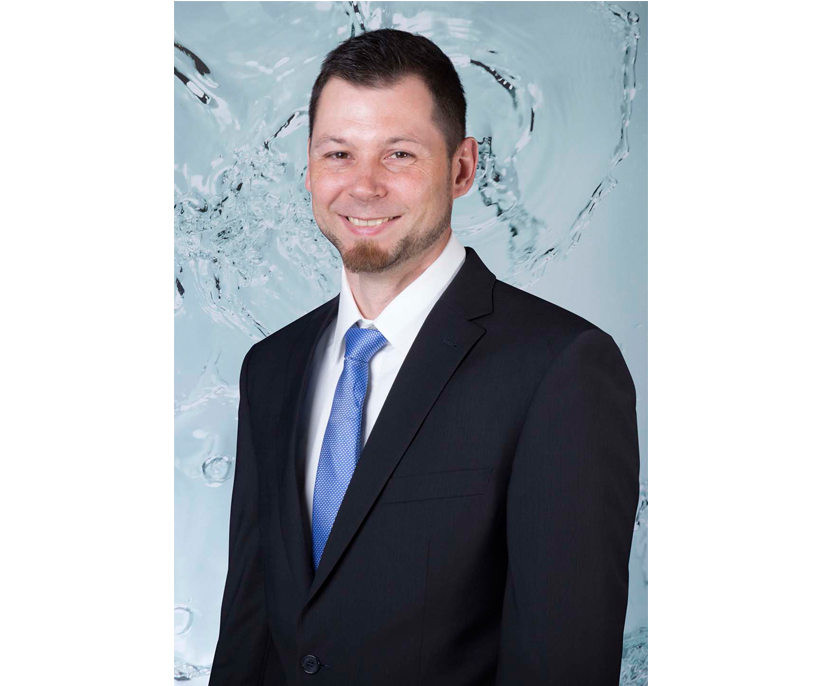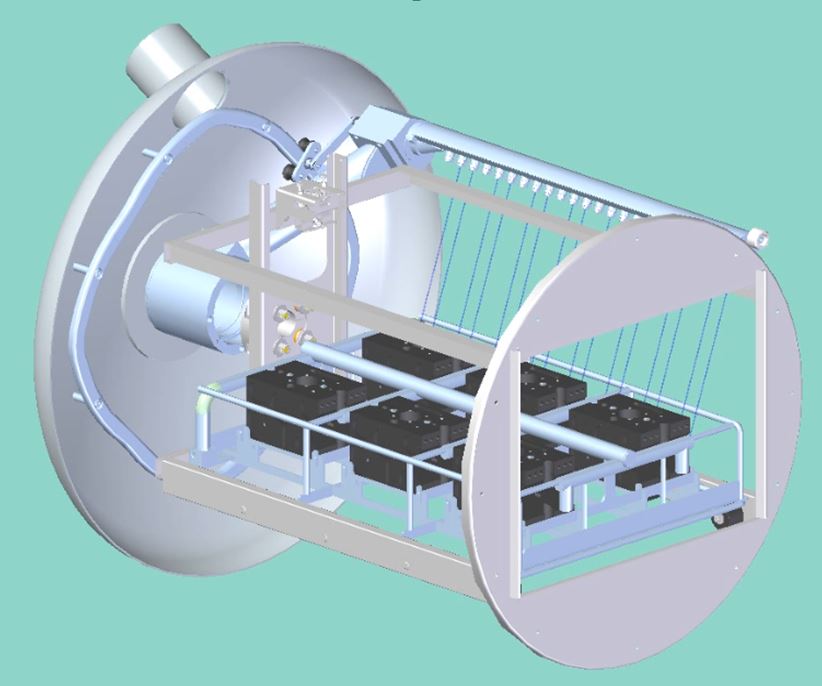Interview: A new dimension in kinematic cleaning
In the past ten years, aqueous parts cleaning systems have developed into high-performance and versatile solutions thanks to continuous improvements in process and systems engineering.
However, due to increasingly tight budgets and time constraints, they are subject to high demands in terms of cost-effectiveness.
There is great potential for optimisation when it comes to contact with the cleaning agent.
As things stand today, process duration and the use of resources still depend on the poorly accessible component surfaces.
As a result, primary, easily accessible areas of the parts are unnecessarily over-cleaned, to the detriment of cost-effectiveness.
With the new "vector kinematics", the machine manufacturer MAFAC has succeeded in taking one step towards greater effectiveness.
The company presented the new process technology at the parts2clean 2018.Why it represents a new dimension in kinematic cleaning and efficiency, explains Stefan Schaal, Technical Managing Director at MAFAC.
Mr Schaal, in October last year, MAFAC presented the new vector kinematics technology for the first time in Stuttgart.
What is behind this technology and what is it about as far as aqueous parts cleaning is concerned?
The MAFAC vector kinematics is a new cleaning and drying system that provides even more movement during cleaning.
It is based on the patented MAFAC process technology with counter- or co-rotation of basket receptacle and spraying system and expands the underlying kinematic principle of dynamic cleaning many times over.
This means, the advantages of kinematic cleaning have been further developed and increased by using targeted flow turbulences.
As a result, workpieces are more uniformly exposed to the cleaning agent and hard-to-reach areas of parts such as blind holes or undercuts are reached even better.
Why did you choose the term "vector kinematics"?
The term "vector kinematics" refers to the targeted movements performed with the new technology.
It is derived from "vector", the description of a directional displacement in space, and "kinematics", the term used for motion in mechanics.
In MAFAC vector kinematics, the motion sequences depend on each other and follow a specific pattern within vector fields.
Thus, the flows or rather turbulences generated also observe a motion pattern.
How exactly does vector kinematics work?
Like the proven MAFAC principle, the new process technology executes a co- or counter-rotating movement of nozzle carrier and basket receptacle system.
The decisive innovation is the additional rocking movement of the nozzle tube around its own axis.
This movement is carried out to both sides at respectively 35°.
The rotational motion of the nozzle arm is coupled to this movement by means of a cam disk, which generates a swivelling motion of the nozzles.
Synchronous to this, the basket receptacle system rotates.
Rotation takes place independent from and opposite to each other, resulting in interesting motion sequences.
A new feature is that both the basket and nozzle carrier rotation take place at an adjusted speed.
This means that the speed of both rotational movements is calculated beforehand by the MAVIATIC controller by means of vector fields.
It does that by simulating a motion pattern and derives motion sequences from it.
The result is an optimally coordinated interplay of nozzle tube and basket movement, whereby both co-rotation and counter-rotation are possible.
How does vector kinematics behave in relation to other aqueous processes or rather, how can it be classified in relation to other aqueous processes?
Compared to other methods, vector kinematics achieves a much more intensive exposure to the cleaning agent.
So far, most aqueous cleaning processes work with rigid nozzle systems.
This means that the nozzle arm is rigidly welded into the treatment chamber and sprays cleaning agent into the centre of the workpiece carrier only at a certain angle.
During this motion sequence, shadow zones cannot be avoided and some regions are inadequately touched by the spray jet.
Depending on the geometry, the contact the part makes with the cleaning agent can vary greatly, which is reflected in the efficiency of the cleaning process.
Water, time, cleaning agents and energy are then applied until the hard-to-reach areas meet the cleaning requirements, although the primary surfaces that are easier to reach already exhibit the necessary cleanliness.
With the new vector kinematics, this discrepancy between primary and secondary surfaces can be reduced.
The nozzles additionally swivel out, thus reaching other areas of the component surface across a range of different angles while maintaining an optimum angle variance calculated in advance.
What effects, advantages and benefits does the process offer operators?
Due to the improved mechanics and the interaction of basket and nozzle movement that is individually and ideally adapted to the components, we achieve a more targeted and, above all, more uniform exposure of the part surfaces to the cleaning agent.
At the same time, the speed is calculated automatically by the software and does not have to be set manually.
This happens as a function of the time that is made available to the process.
The entire process is optimised in terms of time and resources, since undercuts and blind holes can already be reached during spray cleaning, which was previously only possible during the flooding process.
In the case of parts individually placed in parts carriers, this results in up to 60% higher exposure to the cleaning agent; in the case of bulk goods exposure is also significantly improved and more efficient.
Flood cleaning also has a more intensive effect because it has a higher flow turbulence and during drying we also expect a better flow effect due to the moving nozzles.
This results in a higher exchange of heat and materials and the operator gains more effectiveness in less time.
This is an advantage in view of constantly increasing cleanliness requirements and tightening budgets.
In addition, users will in future be able to react much more flexibly to a wide range of components or to changes in their component portfolio:
Thanks to the high angle variance, a large variety of significantly differing workpiece batches can be processed.
Where do you see the main areas of application for the process?
Wherever widely differing batches of workpieces have to be processed, complex workpieces with different to reach geometries are involved, or frequent changes in the component portfolio occur.
The same applies to cast components with very deep drill holes and undercuts, whether these are processed as parts individually placed in parts carriers or bulk material.
In which form will MAFAC make the new process available?
MAFAC vector kinematics will initially be available as an optional feature for the two spray-flooding machines MAFAC JAVA and MAFAC PALMA.
It can make the spraying process even more efficient.
How do you assess the economic benefit of the process?
Depending on the complexity of the parts or the number of shifts driven per day, the system can pay for itself within a short time on the basis of the time and energy savings achieved.
Permanent over-cleaning is very resource-intensive, which is why technical innovations in aqueous parts cleaning such as optimised loading already yield a high economic effect.
What is the significance of vector kinematics for aqueous parts cleaning or rather for the companies that make use of it?
How will the technology develop and where will it lead?
MAFAC vector kinematics opens up a new dimension of kinematic cleaning.
With an up to 60% increased exposure of parts to the cleaning agent, we have achieved a very high optimisation level.
So far, improvement rates in our industry ranged around 10 to 15 %.
The new vector kinematics therefore sets completely new standards in terms of effectiveness.
Thanks to the individual, software-controlled possibilities of adapting the process to the component geometry, new solutions can be found for topics that have not been dealt with previously.
This advances the entire parts cleaning industry by a big step and opens up many new applications.
Both cleaning and drying can be carried out with greater efficiency and reproducible quality in areas where this was previously not yet possible.
The process helps its users achieve the higher speed, quality and cost-effectiveness that will in future be required in industrial parts cleaning.
Therefore, vector kinematics in its current form is a promising starting point with manifold potential for further developments and innovative approaches.


back to last page
back to overview


